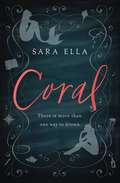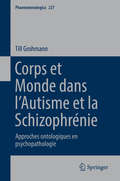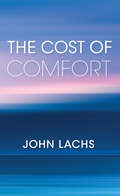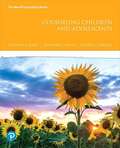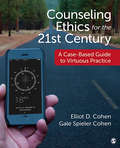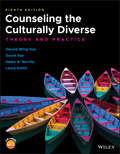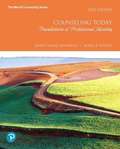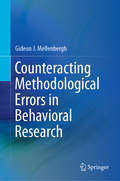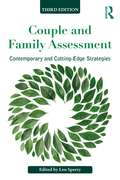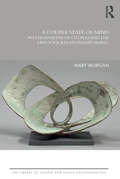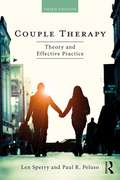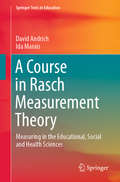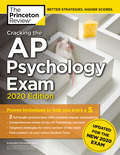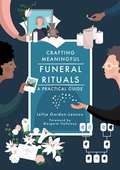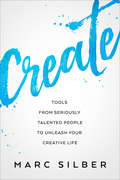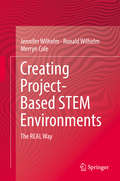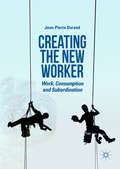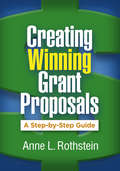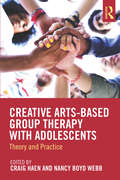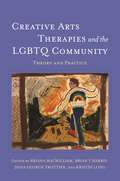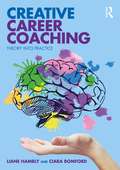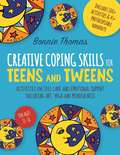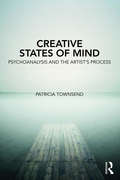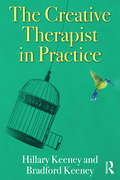- Table View
- List View
Coral
by Sara EllaInspired by &“The Little Mermaid,&” Coral explores what it means to be human in a world where humanity often seems lost.Coral has always been different, standing out from her mermaid sisters in a society where blending in is key. She fears she has been afflicted with the dreaded Disease said to be carried by humans: emotions. Her sister had the Disease, and Red Tide took her away. Will it come for Coral next?Above the sea, Brooke has nothing left to give. Depression and anxiety have left her feeling isolated. Forgotten. The only thing she can rely on is the numbness she finds within the cool and comforting ocean waves. If only she weren&’t stuck at a new group-therapy home that promises a second chance at life. But what&’s the point of living if her soul is destined to bleed?Merrick may be San Francisco&’s golden boy, but he wants nothing more than to escape his controlling father. When his younger sister&’s suicide attempt sends Merrick to his breaking point, escape becomes the only option. If he can find their mom, everything will be made right again—right?When their worlds collide, all three will do whatever it takes to survive. But what—and who—must they leave behind for life to finally begin?Praise for Coral:&“This heart-wrenching tale will pull you under its spell.&” —ANNIE SULLIVAN, author of A Touch of Gold and Tiger Queen&“A beautiful reimagining.&” —LAUREN MANSY, author of The Memory Thief&“A breathless, powerful journey of the heart and mind.&” —LINDSAY A. FRANKLIN, award-winning author of The Story PeddlerA stand-alone, full-length Young Adult novelTrigger warning: suicide and depression
Corps et Monde dans l’Autisme et la Schizophrénie: Approches ontologiques en psychopathologie (Phaenomenologica #227)
by Till GrohmannLe livre offre une investigation phénoménologique des traits caractéristiques des troubles du spectre de l'autisme et de la schizophrénie. Son matériel de base sont des écrits autobiographiques ainsi que des descriptions de patients en première personne. L’objectif principal de cette investigation est double: premièrement, de systématiquement élaborer la corrélation fondamentale entre le corps et le monde; deuxièmement, de comprendre autisme et schizophrénie comme des transformations typiques de cette corrélation. L’auteur interroge schizophrénie et autisme comme des transformations comparables, mais néanmoins fondamentalement distinctes, de la structure ambivalente du corps propre. Il combine une lecture de philosophie phénoménologique avec des approches provenant de la psychiatrie et de la psychopathologie. L’analyse phénoménologique de la corporéité amène l’auteur à analyser une double structure expérientielle, faite de vécus subjectifs et objectifs du corps. En référence à ce paradigme, autisme et schizophrénie apparaissent comme des possibles destins de la structure ambivalente du corps. Un rôle majeur est ici attribué à la spatialisation, c’est-à-dire aux différents modes de vivre et de représenter l’espace.
The Cost of Comfort (American Philosophy)
by John LachsWhy do we feel empty when our lives seem so full? A philosopher&’s &“clear, engaging reflection&” on the psychic risks of today&’s world (John T. Lysaker, author of After Emerson). While comfort has not always reached everyone evenly, most of us who live in the United States today reap the benefits of modern life. We live longer, we eat better food, we have access to good medical care, and we can stay in touch with loved ones who are far away. Yet, as philosopher John Lachs observes, these comfortable lives come at a cost: our increasing unhappiness. Irresponsible behavior, including by those in positions of power in governments and corporations, only increases and multiplies feelings of bitterness and disaffection. In this book, Lachs argues that this dizzyingly complex world often inspires isolation, and that deeper engagement with it is required in order to dispel our growing psychic distance. Lachs advocates for mediation and champions education, advertising, openness, and transparency to help individuals understand the roles they play in society and to nullify claims to blamelessness. Lachs suggests new rules for responsibility and argues that examining and understanding the consequences of one&’s actions is imperative to overcoming the ills and problems of the modern world—and to find the fulfillment we seek. &“A very clear, engaging reflection on a genuine contemporary issue: deep feelings of disengagement and bewilderment about how to live responsibly in an almost overwhelmingly complex world.&” —John T. Lysaker, author of After Emerson
Counseling Children and Adolescents
by Victoria E. Kress Matthew J. Paylo Nicole A. StargellA practical, evidence-based introduction on counseling children and adolescents. This book empowers counselors to thoughtfully and deliberately help young clients tackle complex issues and difficulties. The text covers the principal approaches to counseling children and adolescents, discusses the common issues that bring children and adolescents to counseling, and helps readers understand what counseling younger people looks like. What sets this work apart are its concrete applications and its clear, accessible writing. As one reviewer put it, the text's key strengths are a "practical synthesis of theory into clinical and school counseling..., engaging case studies that are diverse and multiculturally sensitive..., [and] real world application."
Counseling Ethics for the 21st Century: A Case-Based Guide to Virtuous Practice
by Elliot D. Cohen Gale S. CohenCounseling Ethics for the 21st Century prepares students to address ethical issues arising in contemporary counseling practice. Drawing on their own clinical and practical experiences, authors Elliot D. Cohen and Gale Spieler Cohen present detailed, realistic, and engaging clinical case studies along with a comprehensive five-step model that can be used to manage the complex ethical problems raised throughout the book. Each chapter focuses on particular virtues in the context of examining a particular counseling issue, including online counseling, digital record keeping, and social media. Students will be empowered to define problems, identify relevant facts, conduct ethical analyses, and make the best decisions for their clients.
Counseling Ethics for the 21st Century: A Case-Based Guide to Virtuous Practice
by Elliot D. Cohen Gale S. CohenCounseling Ethics for the 21st Century prepares students to address ethical issues arising in contemporary counseling practice. Drawing on their own clinical and practical experiences, authors Elliot D. Cohen and Gale Spieler Cohen present detailed, realistic, and engaging clinical case studies along with a comprehensive five-step model that can be used to manage the complex ethical problems raised throughout the book. Each chapter focuses on particular virtues in the context of examining a particular counseling issue, including online counseling, digital record keeping, and social media. Students will be empowered to define problems, identify relevant facts, conduct ethical analyses, and make the best decisions for their clients.
Counseling the Culturally Diverse: Theory and Practice
by Derald Wing Sue David Sue Helen A. Neville Laura SmithA brand new, fully updated edition of the most widely-used, frequently-cited, and critically acclaimed multicultural text in the mental health field This fully revised, 8th edition of the market-leading textbook on multicultural counseling comprehensively covers the most recent research and theoretical formulations that introduce and analyze emerging important multicultural topical developments. It examines the concept of "cultural humility" as part of the major characteristics of cultural competence in counselor education and practice; roles of white allies in multicultural counseling and in social justice counseling; and the concept of "minority stress" and its implications in work with marginalized populations. The book also reviews and introduces the most recent research on LGBTQ issues, and looks at major research developments in the manifestation, dynamics, and impact of microaggressions. Chapters in Counseling the Culturally Diverse, 8th Edition have been rewritten so that instructors can use them sequentially or in any order that best suits their course goals. Each begins with an outline of objectives, followed by a real life counseling case vignette, narrative, or contemporary incident that introduces the major themes of the chapter. In-depth discussions of the theory, research, and practice in multicultural counseling follow. Completely updated with all new research, critical incidents, and case examples Chapters feature an integrative section on "Implications for Clinical Practice," ending "Summary," and numerous "Reflection and Discussion Questions" Presented in a Vital Source Enhanced format that contains chapter-correlated counseling videos/analysis of cross-racial dyads to facilitate teaching and learning Supplemented with an instructor's website that offers a power point deck, exam questions, sample syllabi, and links to other learning resources Written with two new coauthors who bring fresh and first-hand innovative approaches to CCD Counseling the Culturally Diverse, 8th Edition is appropriate for scholars and practitioners who work in the mental health field related to race, ethnicity, culture, and other sociodemographic variables. It is also relevant to social workers and psychiatrists, and for graduate courses in counseling and clinical psychology related to working with culturally diverse populations.
Counseling Today: Foundations Of Professional Identity
by Darcy H. Granello Mark E. YoungCounseling Today: Foundations of Professional Identity does more than overview professional practice competencies--it actively engages students using relatable, real-life scenarios and effective pedagogical aids designed for the way they learn best. <p><p> As students are introduced to current research, controversial topics, and authentic counseling stories, they are challenged to think critically and reflect on what they learn. This approach keeps them involved in their learning as they acquire the skills they need to develop their professional identities. Filled with more first-person accounts, new social justice themes, over 300 updated reference citations, and the latest CACREP standards, the 2nd Edition gives readers true insight into the way that counseling is practiced today.
Counteracting Methodological Errors in Behavioral Research
by Gideon J. MellenberghThis book describes methods to prevent avoidable errors and to correct unavoidable ones within the behavioral sciences. A distinguishing feature of this work is that it is accessible to students and researchers of substantive fields of the behavioral sciences and related fields (e.g., health sciences and social sciences). Discussed are methods for errors that come from human and other factors, and methods for errors within each of the aspects of empirical studies. This book focuses on how empirical research is threatened by different types of error, and how the behavioral sciences in particular are vulnerable due to the study of human behavior and human participation in studies. Methods to counteract errors are discussed in depth including how they can be applied in all aspects of empirical studies: sampling of participants, design and implementation of the study, instrumentation and operationalization of theoretical variables, analysis of the data, and reporting of the study results. Students and researchers of methodology, psychology, education, and statistics will find this book to be particularly valuable. Methodologists can use the book to advice clients on methodological issues of substantive research.
Couple and Family Assessment: Contemporary and Cutting‐Edge Strategies (Routledge Series on Family Therapy and Counseling)
by Len SperryThe field of family, child, and couple assessment continues to evolve and change since the first edition of this book appeared in 2004. Couple and Family Assessment, Third Edition, is a thoroughly revised and updated resource for anyone working with children, adolescents, couples, and families. It provides an in-depth description of an even larger number of clinically useful assessment tools and methods, including issue-specific tools, self-report inventories, standardized inventories, qualitative measures, and observational methods. Each chapter provides strategies for systematically utilizing these various assessment methods and measures with a wide range of family dynamics that influence couples and families. These include couples conflict, divorce, separation, mediation, premarital decisions, parenting conflicts, child abuse, family violence, custody evaluation, and child and adolescent conditions, i.e., depression, anxiety, conduct disorder, bipolar disorder, obsessive compulsive disorder, autism, Asperger’s syndrome, and learning disorders that can significantly influence family dynamics. This third edition features the latest, most common and important assessment tools and strategies for addressing problematic clinical issues related to working with families, couples, and children. Chapters 3 through 11 include matrices that summarize pertinent information on all instruments reviewed, allowing readers to instantly compare more than 130 assessment devices. Finally, the book provides extensive clinical case material that illustrates the use of these various assessment tools and strategies in a wide array of clinical situations. Couple and Family Assessment, Third Edition, will be useful to both trainees and practitioners as a ready reference on assessment measures and strategies for working with families, couples, and children.
A Couple State of Mind: Psychoanalysis of Couples and the Tavistock Relationships Model (The Library of Couple and Family Psychoanalysis)
by Mary MorganA Couple State of Mind is a much anticipated book aimed at an international audience of practitioners, students and teachers of psychoanalytic couple therapy, describes the Tavistock Relationships model of couple psychoanalytic psychotherapy, drawing on both historical and contemporary ideas, including the author’s own theoretical contributions. The book references contemporary influences of other psychoanalytic approaches to couples, particularly from an international perspective. It will be invaluable for all students learning about psychoanalytic work with couples for other psychoanalytic practitioners interested in this field.
Couple Therapy: Theory and Effective Practice
by Paul Peluso Len SperryThis new edition of Couples Therapy tackles four challenges currently facing the field: (1) accountability and the increasing demands for demonstrating effectiveness as a condition for reimbursement, (2) the need for practitioners to reconfigure their practice patterns in an ever-involving health-care system, (3) training mental health practitioners who have not completed marital and family therapy (MFT) programs, and (4) integrating new couples approaches and interventions into everyday clinical practice. The book offers a focused vision and successful strategies for working effectively with couples, both today and tomorrow. It incorporates the best insights from the neurosciences as well as new couples theories, research, and evidence-based interventions, introducing approaches including psychoanalytic, systemic, cognitive behavioral, Adlerian, constructivist, third wave, integrative, and mindfulness-based. Chapters also present practical applications and professional considerations, with a comprehensive look at how to work with diverse issues in couples therapy, such as substance abuse, domestic violence, sexual dysfunction, infidelity, aging, and much more. This third edition of Couples Therapy is an essential resource for students as well as mental health practitioners, social workers, and family counselors who are keen to better meet the needs of couples and the demands of the changing healthcare landscape.
A Course in Rasch Measurement Theory: Measuring in the Educational, Social and Health Sciences (Springer Texts in Education)
by David Andrich Ida MaraisThis book applies Rasch measurement theory to the fields of education, psychology, sociology, marketing and health outcomes in order to measure various social constructs. The chief focus is on first principles of both the theory and its applications. Because software is readily available to carry out analyses of real data, numerous small examples are provided in the book. The software used in these examples, and which is helpful in working through the text, is RUMM2030 (Rasch unidimensional models for measurement).The book’s main goals are to equip researchers with the confidence they need in order to be in control of the analysis and interpretation of data, and to make professional rather than primarily statistical decisions mechanically. Because statistical principles are necessarily involved, reviews of the requisite statistics are provided in the Appendix.The content is based on courses that have been taught both online and in intensive form for over two decades. Although first principles are emphasised, much of the book is based on research conducted by the two authors and their colleagues.
Cracking the AP Psychology Exam, 2020 Edition: Practice Tests & Prep for the NEW 2020 Exam (College Test Preparation)
by The Princeton ReviewEVERYTHING YOU NEED TO SCORE A PERFECT 5. Ace the 2020 AP Psychology Exam with this comprehensive study guide—including 2 full-length practice tests with complete answer explanations, thorough content reviews, targeted exam strategies, and access to online extras. Techniques That Actually Work.• Tried-and-true strategies to help you avoid traps and beat the test• Tips for pacing yourself and guessing logically• Essential tactics to help you work smarter, not harderEverything You Need to Know to Help Achieve a High Score.• Comprehensive content review for all test topics• Up-to-date information on the 2020 AP® Psychology Exam• Useful lists of key terms in every content review chapter• Access to study plans, a handy list of key terms, helpful pre-college information, and more via your online Student ToolsPractice Your Way to Excellence.• 2 full-length practice tests with complete answer explanations• Practice drills at the end of each content review chapter• Detailed step-by-step explanations of sample questions to help you create your personal pacing strategy• Online study guides to strategically plan out your AP Psychology prepWritten by Princeton Review experts who know their way around bio, Cracking the AP Psychology Exam gives you the tools you need for the score you want.
Crafting Meaningful Funeral Rituals: A Practical Guide
by Jeltje Gordon-LennoxFunerals are among the most important life events in Western society, and fashioning a personalized ceremony for yourself or for a loved one is often the most meaningful way to celebrate the life of the deceased. For those wanting non-religious or secular funeral ceremonies, this step-by-step guide begins by identifying what you want from the funeral and showing how you can make it happen. With sections on society's views of mortality, our need for rituals and crafting the actual ceremony, this guide provides the tools and philosophy to understand, plan and tailor a funeral for individuals. Includes all the tools necessary for the creation of a ceremony, such as a Ritual Profiles, checklists, and many other handy resources.
Create: Tools from Seriously Talented People to Unleash Your Creative Life
by Marc SilberCreative conversations from some of the world&’s top photographers, filmmakers, Grammy award winners, TED presenters, actors, CEOs and more! Many of us think of creativity as something distant and incompatible with daily life—a skill that artists get to use, but not the rest of us. Maybe you feel like a land-locked surfer, yearning for exhilarating rides. Or maybe you live for the few hours a week when you can take photographs, paint, or write. It&’s time for a new mindset. Create shows you how to rediscover the artist within you. People who make a living in the creative arts know that there is a cycle to unlocking the imagination. Visualize, know your tools, work your craft, refine, share. When you tap into this cycle, you&’ll find ways to operate at your highest state in all aspects of life. Overcoming the barriers to innovation is easier than you think. Marc Silber—bestselling author, award-wining creative and educator—shows you how to avoid the traps of procrastination, overthinking, and self-doubt. The exercises in Create are specifically designed to help you find certainty and confidence in self-expression. Learn how to: · Master the techniques of visualization · Draw inspiration from the world around you · Collaborate with people who can further your vision · Share with others to spread the joy &“Take it from someone who has been an educator in the arts for decades: if you want a more artistic and fun life, you&’re holding the book that will do it (plus, you&’ll love Marc&’s delightful and engaging writing style). Highly recommended.&” —Scott Kelby, author of The Digital Photography Book
Creating Project-Based STEM Environments: The REAL Way
by Jennifer Wilhelm Ronald Wilhelm Merryn ColeThis book models project-based environments that are intentionally designed around the United States Common Core State Standards (CCSS, 2010) for Mathematics, the Next Generation Science Standards (NGSS Lead States, 2013) for Science, and the National Educational Technology Standards (ISTE, 2008). The primary purpose of this book is to reveal how middle school STEM classrooms can be purposefully designed for 21st Century learners and provide evidence regarding how situated learning experiences will result in more advanced learning. This Project-Based Instruction (PBI) resource illustrates how to design and implement interdisciplinary project-based units based on the REAL (Realistic Explorations in Astronomical Learning – Unit 1) and CREATES (Chemical Reactions Engineered to Address Thermal Energy Situations – Unit 2). The content of the book details these two PBI units with authentic student work, explanations and research behind each lesson (including misconceptions students might hold regarding STEM content), pre/post research results of unit implementation with over 40 teachers and thousands of students. In addition to these two units, there are chapters describing how to design one’s own research-based PBI units incorporating teacher commentaries regarding strategies, obstacles overcome, and successes as they designed and implemented their PBI units for the first time after learning how to create PBI STEM Environments the “REAL” way.
Creating the New Worker: Work, Consumption and Subordination
by Jean-Pierre DurandThis book explores the relationship between the changing nature of capitalism and the creation of the new worker. In a changing global economy, work - as the activity that structures individuals in capitalism both socially and psychologically - is being undermined. Combining a Gramscian critique of contemporary patterns of capitalist labour control with Lacanian psychoanalysis, Durand examines what kinds of human beings are emerging in and through modern work, or on its margins. Creating the New Worker will be of interest to students and scholars who engage in the sociology and psychology of work, economics, and labour.
Creating Winning Grant Proposals: A Step-by-Step Guide
by Anne L. RothsteinProviding clear-cut steps for producing each section of a competitive grant proposal, this hands-on book is filled with examples from actual RFPs and proposals, practical tools, and writing tips. Prominent educator and successful proposal writer Anne L. Rothstein shares a systematic process created over decades of experience in the field. She details how to: achieve group consensus around a project; identify likely funding sources; establish need; develop objectives; assemble a Master Project Table and other needed tables, figures, and charts; create an effective logic model; prepare an evaluation; put together a budget; tailor the proposal to meet the requirements of funders; and avoid common errors. Purchasers get access to a Web page where they can download and print the book's 14 reproducible templates in a convenient 8 1/2" x 11" size.
Creative Arts-Based Group Therapy with Adolescents: Theory and Practice
by Craig Haen Nancy Boyd WebbCreative Arts-Based Group Therapy with Adolescents provides principles for effective use of different arts-based approaches in adolescent group therapy, grounding these principles in neuroscience and group process practice-based evidence. It includes chapters covering each of the main creative arts therapy modalities—art therapy, bibliotherapy, dance/movement therapy, drama therapy, music therapy, and poetry/expressive writing therapy—written by respected contributors who are expert in the application of these modalities in the context of groups. These methods are uniquely effective for engaging adolescents and addressing many of the developmental, familial, and societal problems that they face. The text offers theory and guiding principle, while also providing a comprehensive resource for group therapists of diverse disciplines who wish to incorporate creative arts-based methods into their practice with teens.
Creative Arts Therapies and the LGBTQ Community: Theory and Practice
by Briana MacWilliam Brian T Harris Dana George Trottier Kristin Long Britton Williams Judith Luongo Mark Beauregard Julie Lipson Beth Gonzalez-Dolginko Mikella Millen Sarah Gluck Michael Kariyev Liisa Murray Olivia Cohen Ashley L. Koenig Cara Aubrey GalloProviding theory and practical interventions, this book is the perfect companion to creative arts therapy students and professionals who wish to work with the LGBTQ community and the unique challenges that sexual minorities, transgender and gender non-conforming (TGNC) clients face today.Considering ally development, unconscious bias and intersectionality, the book provides theory, case studies and practical guidance for working with this client group, as well as experiences emerging from within the LGBTQ and CATs community. The contributors cover a wide range of topics, from exploring sexuality and gender identity through portraiture to facilitating a music therapy group with transgender clients, and foster ally development in senior living communities through a multimodal approach.With research finding that people from the LGBTQ community are at increased risk of depression and anxiety, Creative Art Therapies and the LGBTQ Community provides indispensable guidance for therapists.
Creative Career Coaching: Theory into Practice
by Liane Hambly Ciara BomfordCreative Career Coaching: Theory into Practice is an innovative book for career development students and professionals aiming to creatively progress their coaching practice. Without losing sight of fundamental coaching values and practices, it encourages career development professionals to adapt their practice by harnessing imagination, intuition and critical reflection to engage clients. Hambly and Bomford consider the usefulness of creativity alongside traditional coaching models to reach "harder to help" groups. They consider a whole-brain approach to creativity, emphasising the need for coaches to adapt their client-facing skills for individual cases. They work through how clients make career decisions, how to use labour market information to motivate clients, how to frame a creative coaching session using techniques such as metaphor, visualisation and role play, how to use practical tools and techniques to resolve a client’s individual needs, and how to deliver on digital platforms. Combining the latest neuroscientific research with activities, summaries and case studies, this book provides a practical, skills-based approach to coaching. Creative Career Coaching: Theory into Practice is the first book to summarise the Creative Career Coaching Model. It will be an indispensable resource for students of career development, career coaching, coaching psychology and advice and guidance courses. It will also be of interest to career coaches in practice seeking to enhance their skills.
Creative Coping Skills for Teens and Tweens: Activities for Self Care and Emotional Support including Art, Yoga, and Mindfulness
by Bonnie ThomasThis photocopiable activity book helps teens and tweens who are feeling voiceless, ineffective or fearful in response to events at a world, community or individual level. It incorporates exercises using art and craft, nutrition, mindfulness, yoga and other movement based activities.This book offers dozens of suggestions, interventions, and activities for ways that tweens and teens can care for their physical and mental health, including managing life's stressors, how to recognize 'red flags' in a relationship, and listening to their body's intuition more often. Ideal for mental health counselors, social workers, program coordinators, and other providers working with this age group, it can also be used by parents.
Creative States of Mind: Psychoanalysis and the Artist’s Process
by Patricia TownsendWhat is it like to be an artist? Drawing on interviews with professional artists, this book takes the reader inside the creative process. The author, an artist and a psychotherapist, uses psychoanalytic theory to shed light on fundamental questions such as the origin of new ideas and the artist’s state of mind while working. Based on interviews with 33 professional artists, who reflect on their experiences of creating new works of art, as well as her own artistic practice, Patricia Townsend traces the trajectory of the creative process from the artist’s first inkling or ‘pre-sense’, through to the completion of a work, and its release to the public. Drawing on psychoanalytic theory, particularly the work of Donald Winnicott, Marion Milner and Christopher Bollas, the book presents the artist’s process as a series of interconnected and overlapping stages, in which there is a movement between the artist’s inner world, the outer world of shared ‘reality’, and the spaces in-between. Creative States of Mind: Psychoanalysis and the Artist’s Process fills an important gap in the psychoanalytic theory of art by offering an account of the full trajectory of the artist’s process based on the evidence of artists themselves. It will be useful to artists who want to understand more about their own processes, to psychoanalysts and psychotherapists in their clinical work, and to anyone who studies the creative process.
The Creative Therapist in Practice
by Hillary Keeney Bradford KeeneyIn The Creative Therapist in Practice Hillary and Bradford Keeney present a radically innovative approach to the practice of therapy. Combining improvisational performing arts, action-oriented cybernetics, and ecstatic healing traditions, therapy is re-imagined as a creative transformative art. The book demonstrates the principles of creative therapy through numerous transcriptions of sessions conducted by the authors. It guides practitioners in conducting a three-part therapeutic performance: beginning with therapeutic techniques that broaden the context, igniting a session to creatively "cook," and finally concluding with a creative prescription for change that can be incorporated into the client’s daily living. As well as tracing the historical development of creative therapy, chapters explore what is possible for the future of therapy when practitioners leave behind conventional models and theoretical interpretations. Applying case examples of creative therapy to a wide range of presenting concerns, The Creative Therapist in Practice will be relevant to clinicians working across the field of mental health, including licensed psychotherapists, psychologists, and clinical social workers. Filled with inspiring anecdotes, unique interventions, and fascinating case illustrations, it will benefit anyone looking to become more naturally improvisational and wake up the creative life force in their sessions.
